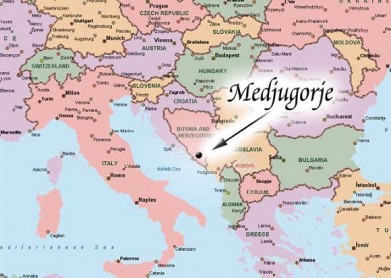 Here is a short item from the news site Corrispondenza Romana. It doesn’t indicate any sources, so I’m not sure how reliable it is, but here it is for your information. The translation (and any mistakes in it) are mine:
Here is a short item from the news site Corrispondenza Romana. It doesn’t indicate any sources, so I’m not sure how reliable it is, but here it is for your information. The translation (and any mistakes in it) are mine:
Last Saturday, September 7, at his morning meditation in the chapel of the Domus Sanctae Marthae, Pope Francis, speaking on the theme “there is no Christian without Jesus” criticized “revelationist” Christians and expressed his strong reserve about the alleged apparitions at Medjugorje.
However, the official site of the Holy See and the Osservatore Romano (here is the Italian version) purged their words of any reference to Medjugorje, referring to it only in these terms: “There is another group of Christians without Christ: those who look for rarities and curiosities that come from private revelations,” whereas Revelation was completed with the New Testament. The Holy Father warned about the desire of such Christians to go “to the spectacle of a revelation, to experience something new”. But the Pope addresses to them this exhortation: “Pick up the Gospel!”
The homilies the Holy Father delivers off the cuff in the little chapel of the Casa Santa Marta, where he resides and where he celebrates the Holy Mass almost every morning with various groups of the faithful present, are not acts of the Magisterium, but are often presented as though they were. Still, they do express the Pope’s thinking somewhat and in that way may give an indication of his acts of governance. It would be meaningful to put a DVD containing the full texts of his talks at the disposition of the faithful, as with other homilies.
On the coming 13th of October, at the foot of the statue of Our Lady of Fatima, Pope Francis will consecrate the world to the Immaculate Heart of Mary and will almost certainly talk about the role of Marian apparitions in the economy of salvation. Considering the Pope’s character and his way of governing, it is hard to think that he would avoid expressing his position in public or in private on the delicate case of Medjugorje. In 2010 the Holy See established a special international commission of inquiry about it, under the presidency of the cardinal Camillo Ruini, composed of 13 permanent members. The definitive results of the inquiry will be submitted to Pope Francis shortly for a definitive decision.
